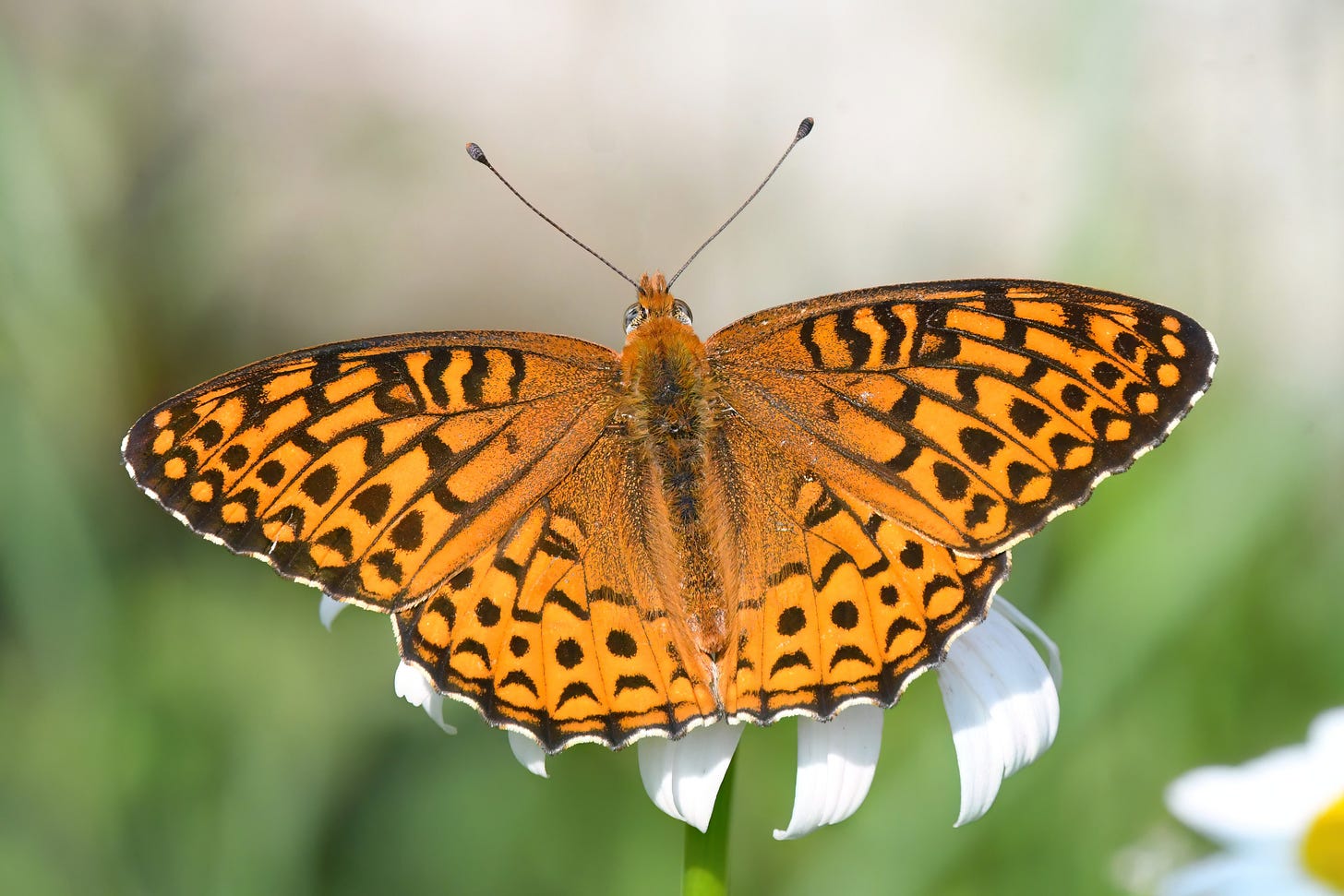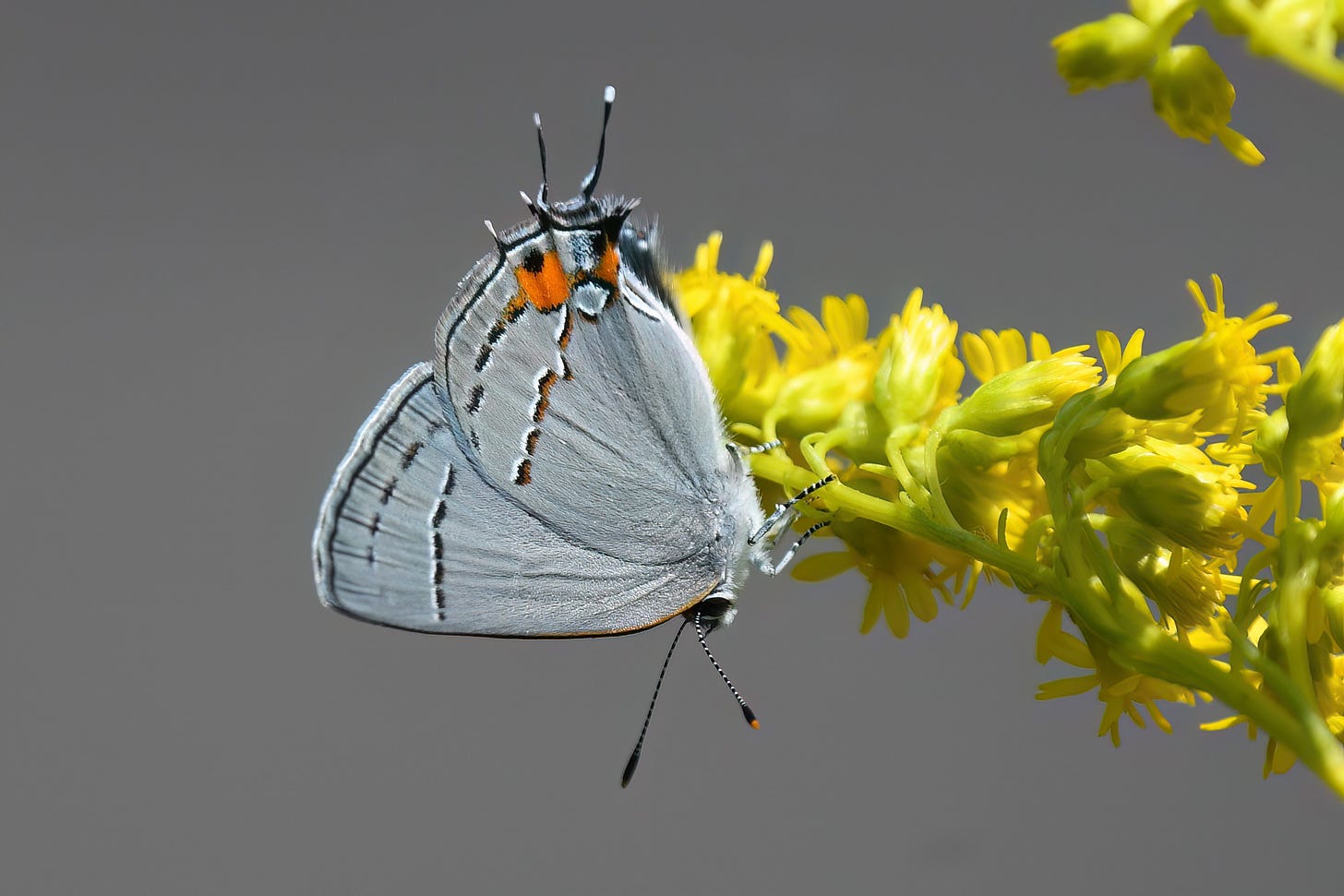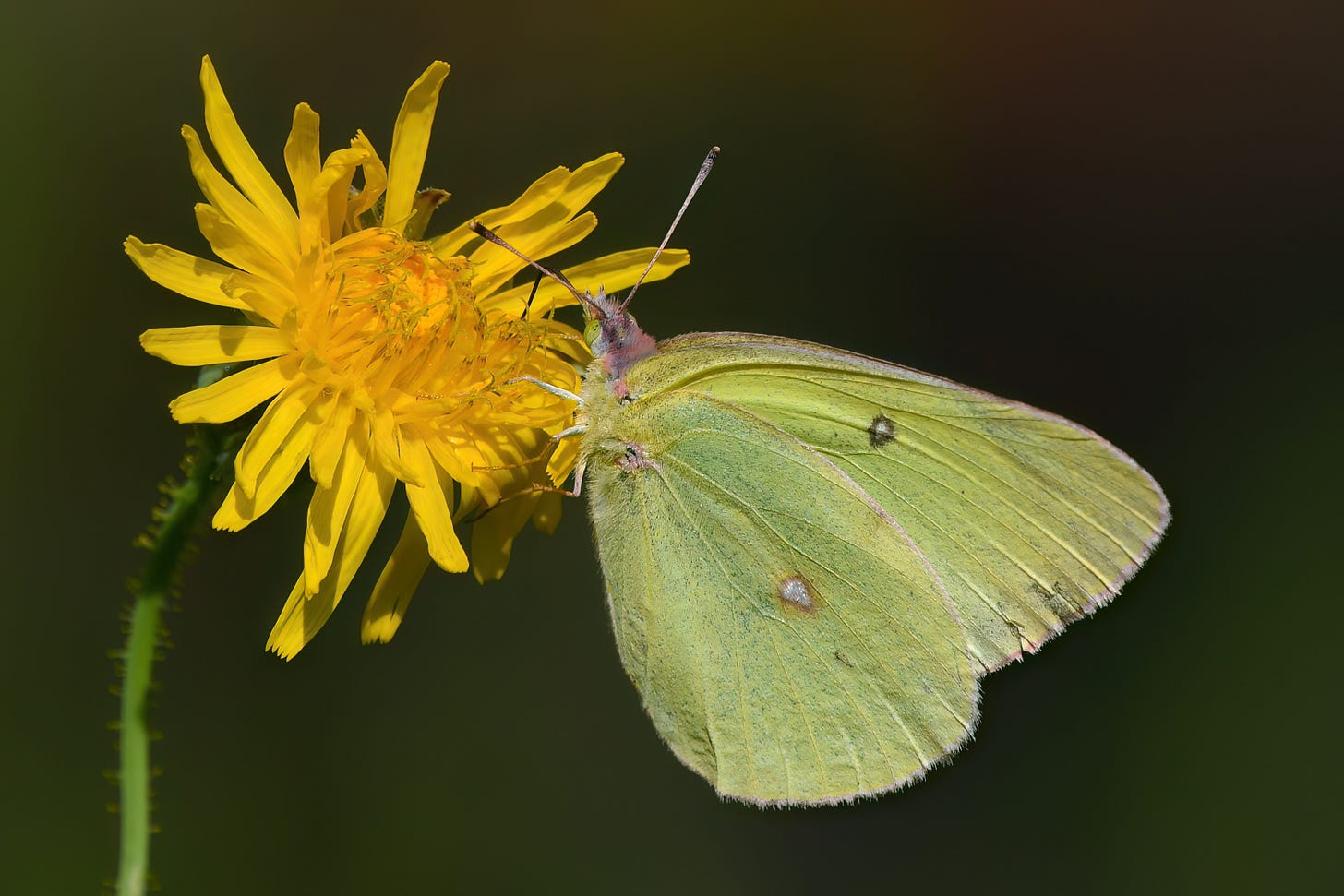It’s not the numbers, though you try your darnedest to ID every one that zips by. It’s not the species per se, some favourites but all equally important on count day. It’s not that you’re in some small way helping butterfly survival, since count results feed into the great entomological data base in the clouds and help worried scientists keep an eye on how these beautiful scale-winged insects are doing. It’s certainly not for any competition, though count compilers always grin when they say “hey, that might be a high for the province.”
It’s not even for the camaraderie, though meeting up at the day’s-end tally, sweaty and bug-bitten, with folks you share this passion with and sometimes see just once a year, is always enjoyable.
Nope, the main reason to take part in a butterfly count is to spend time in places where they still abound, habitats that haven’t been mowed, sprayed or built on. Wild spaces where native grasses, sedges, wildflowers and woods still flourish. What’s good for butterflies is good for the soul, and committing to a count is a good excuse to drop everything and get out there.
So I was delighted that Haliburton County was slated for sunshine last Saturday, and the forecast came true. Fair-weather insects don’t fly in the rain! Dawn was dewy and damp, from remnants of Hurricane Beryl, as we scouted for stands of milkweed and flower-filled pastures along back roads in our section of the count circle. But mist around the lakes was burning off by 8:00 a.m., when we saw our first clouded sulphur flit by, and officially started our count.
Brilliant Dennis, who grew up in the Haliburton woods, knew where to begin: Paul Hilyer’s farm, a high dry ridge running back through the forest off the Upper Dutch Line road. Paul never cuts his hay before the bobolinks that nest there fledge, so males were singing their bubbly song and youngsters flying awkwardly about as we wandered through waist-high grasses, startling wood-nymphs at every step, big butterflies the colour of dark chocolate.
A few monarchs were waking up and flitting by, a few skippers—European, Peck’s and duns--fluttering low in the grass. But a constant distraction, and delight, were the fritillaries dashing past, glorious bright orange beauties that offer a challenge to anyone but a butterfly expert. Great spangled are most common most years, and easy for me to identify. With many species seeming to be ahead of schedule this strange year, we found Atlantis and Aphrodite fritillaries mixed in, slightly smaller variations on a theme. Even when I managed to catch one in my net and study it up close I wasn’t always positive which species I was looking at, or wishing long life and happiness as I let it go. You do the best you can. There’s always lots to learn.
After three fruitful hours trudging through Paul’s hayfields we headed to the legendary Ironmine Road, a dirt track that cuts through kilometers of Haliburton bush and wetlands, off roads named for early settlers, the Swinsons and the Bullers, whose abandoned farms are returning to forest. It has a washed-out section in the middle that means we have to backtrack, drive way around and come in from the other side to cover it all, but it’s well worth it, given the specialties we usually find there. Eyed browns, for example. And rare skippers such as mulberry wings, with their yellow “airplane” pattern. Tiny least skippers, fluttering weakly among the sedges. Big orange Delawares, and dions with that ray across their hindwing. Each species a treasure, a delight, and I’m always so relieved to learn that populations still flourish.
There were fresh washouts blocking our way, culverts swept downstream in the Beryl floods that week. We wondered if they’d ever be replaced, and kind of hoped they wouldn’t, obstacles slowing the ATVs that roar through and run over vulnerable inhabitants, turtles laying eggs and baby water snakes sunning on the road.
White admirals were out in the woods in good numbers, as we’d hoped, and a few commas “puddling” in muddy dips and hollows. We noted midsummer tiger swallowtails bounding about, but didn’t find a single mourning cloak all day. Between broods? And my greatest disappointment, no hairstreaks, small butterflies with bits of orange or blue edging their elegant grey wings.
After touring a few more familiar spots we went back to Dennis’s family farm and drove out through the overgrown hayfield, checking stands of milkweed that flourish there now, oases for monarchs. And wood-nymphs. Our day’s total for the former turned out to be 116, and for the latter, 545. Dennis and I found 35 species in all, and the count total was 55, a bit above average compared to other years in beautiful Haliburton, according to compiler Ed Poropat.
Feast for the soul, being out with butterflies. We missed two counts while away at our granddaughter’s wedding, but have one more this coming Saturday, down a narrow dirt track in the Peterborough Game Reserve. We’re hoping for sunshine.















Loved it! Have you thought about collecting some of these posts into a book? It would probably take several books, which means you'd have a series. Just an idea, hint, hint.
So great to read about adventures